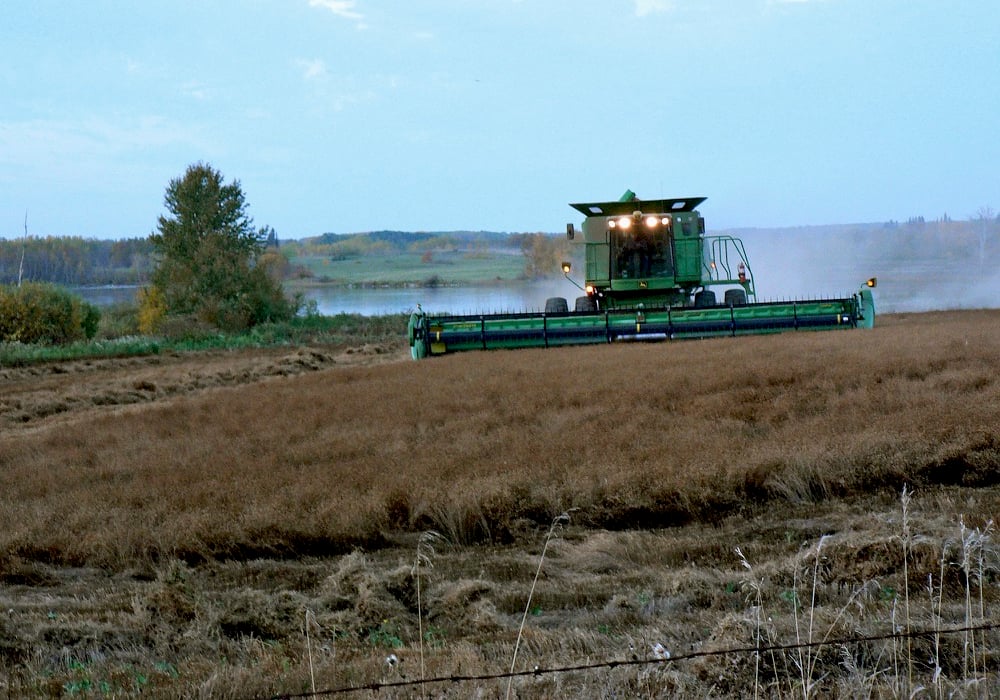July 20 (Reuters) – From the heart of the U.S. farm belt to Colombia, Vietnam and Indonesia, livestock producers are snapping up wheat damaged by bad weather or low in protein, providing pigs and poultry with grain more often milled for making bread.
The increased global purchases of cheap, poor quality wheat for animal feed come as a combination of bumper crops and low prices increase its appeal compared to alternatives like corn.
“There’s a massive amount of wheat out there that didn’t make the grade,” said one U.S. grain merchandiser, who spoke on condition of anonymity. “The next best option is to either carry it or find another mouth for it as feed.”
Read Also

Most of Manitoba harvest wraps up for 2025
Manitoba Agriculture issued its final crop report of 2025, showing the overall provincewide harvest at 97 per cent complete as of Oct. 20. Nearly all major crops have finished combining, with 37 per cent of Manitoba’s sunflowers finished, plus 71 per cent of grain corn and small amounts of soybeans and potatoes left to do.
But quality problems have weighed on prices. Now wheat is eating into demand for corn – also a staple animal feed and already under pressure from its own ample global supplies.
The USDA last week hiked its estimate for global wheat consumption in the coming year by 13.3 million tonnes to the highest ever, “primarily on increased feed use” which the agency estimated at 144.42 million tonnes.
The last time so much wheat was used as feed was four years ago, when a harsh drought slashed U.S. corn production.
This time around, bumper corn crops mean it is selling below benchmark-quality wheat, but discounts for damaged wheat and low protein make the difference. The USDA cut its forecast for global consumption of coarse grains, including corn, by 3.3 million tonnes.
Chicago Board of Trade corn is currently 65-75 cents per bushel cheaper than wheat . But discounts on low-protein or damaged wheat knock its price down by more than $1 per bushel, making such product competitive with corn, grain traders say.
“Wheat’s a great substitute for corn, there’s plenty of it, and it’s at $7 or $8 a tonne discount (to corn),” said a U.S. grain export trader who did not want to be named because he is not authorized to speak to the media. “I’ve had some Colombians take it, and I’d love to sell them more.”
Colombia’s neighbour, Brazil, is an exception. It had its own feed wheat frenzy earlier this year when hog and poultry producers used wheat for the first time in a decade as corn prices soared following a severe drought.
LOWER COSTS
Grain customers in the United States – from livestock producer Cargill to major domestic hog producer The Maschhoffs – are using more wheat in feed rations.
“We’re seeing feed manufacturers and livestock producers gravitate toward wheat because it makes sense economically,” said David Fairfield, senior vice president of feed services at the National Grain and Feed Association.
On the U.S. East Coast, home to some of the country’s biggest pork production, ships carrying feed wheat from the United Kingodom have been unloading volumes not seen in years, as a weak pound and cheap freight give it a competitive edge, said Jack Watts at Britain’s Agriculture and Horticulture Development Board.
About 63,000 tonnes of wheat arrived from Britain in May, according to the latest customs data – the largest shipments since 2011-12.
But western European supplies of rain-damaged milling wheat find ready markets close to home. Black Sea export shipments are discounted $25 a tonne to corn, compared with $7 premiums in February.
“You cannot substitute corn 100 percent, but I think the animal feed manufacturers and importers will take wheat content to the limit,” said a German trader who asked not to be named.
Another German trader, who also requested anonymity, said demand for feed wheat has risen sharply from some of the big Asian importers, such as South Korea and Indonesia. The latter has already slapped controls on imports in a bid to encourage feed mills to use domestic corn.
“Korean importers have told me that, in the present price constellation, they will switch to more feed wheat tenders from corn in coming weeks,” this German trader said.
“In South Korea alone, this could result in about 150,000 tonnes a month of corn imports being switched to feed wheat.”














